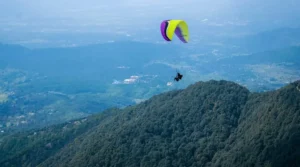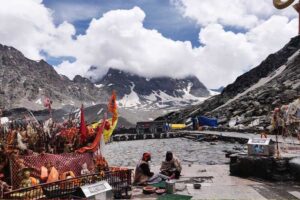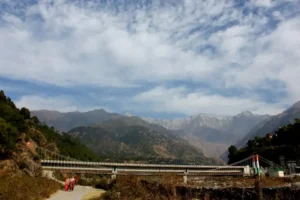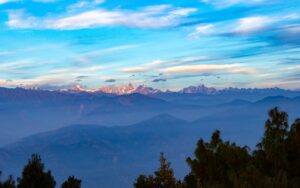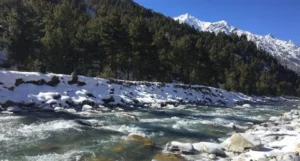Family Adventure Awaits: 10 Exciting Aspects of Vaishno Devi Yatra
The Vaishno Devi Yatra is a sacred pilgrimage in the scenic hills of Jammu and Kashmir, India. It is a popular destination for devotees seeking blessings from the Hindu goddess Vaishno Devi. This content brief aims to highlight 10 exciting aspects of the Vaishno Devi Yatra, providing a comprehensive guide for families planning their spiritual adventure.

Importance of Family Adventures
Family adventures are essential for creating lasting memories, strengthening bonds, and fostering a sense of togetherness. Engaging in adventurous activities as a family not only provides an opportunity for fun and excitement but also promotes communication, teamwork, and personal growth. It allows families to break away from routine and explore new places, creating a sense of shared experiences and lifelong connections.
Overview of Vaishno Devi Yatra
Vaishno Devi Yatra is a popular pilgrimage in India that attracts millions of devotees every year. Located in the Trikuta Mountains of Jammu and Kashmir, the Vaishno Devi Temple is dedicated to the Hindu goddess Vaishno Devi. The yatra involves a spiritual journey to the temple, where devotees seek blessings and fulfillment of their wishes. The pilgrimage holds immense religious significance and is considered a sacred and transformative experience for the devotees.
Significance of Vaishno Devi Temple
The Vaishno Devi Temple is one of the most revered Hindu shrines in India. It is believed that the goddess Vaishno Devi fulfills the wishes of her devotees and blesses them with prosperity, happiness, and spiritual growth. The temple is considered a source of divine energy and a place of profound spiritual significance. Devotees from all walks of life undertake the yatra to seek the goddess’s blessings and experience a deep sense of devotion and connection.
Getting to Know Vaishno Devi
History and Mythology of Vaishno Devi
The history of Vaishno Devi dates back to ancient times and is intertwined with various legends and mythological stories. According to Hindu mythology, Vaishno Devi is an incarnation of the Goddess Durga. It is believed that she took birth to annihilate the demon Mahishasura and uphold righteousness on Earth.
The legend goes that the goddess, in the form of Vaishnavi, meditated in the caves of the Trikuta Mountains for thousands of years. She attained immense spiritual power and emerged to defeat the demon. Over time, the site of her meditation became the sacred pilgrimage destination known as Vaishno Devi.
Spiritual Significance of Vaishno Devi
Vaishno Devi holds immense spiritual significance for devotees. It is believed that her blessings bring fulfillment of desires, protection, and spiritual awakening. The pilgrimage to Vaishno Devi is seen as a journey of faith and devotion, where devotees surrender themselves to the divine energy of the goddess.
Many devotees undertake the yatra to seek solace, divine intervention, and spiritual guidance. The sacred atmosphere, the aura of devotion, and the arduous trek to the temple are believed to purify the soul and strengthen one’s connection with the divine. The spiritual significance of Vaishno Devi is deeply rooted in the hearts and minds of millions of devotees who embark on this transformative pilgrimage.
Cultural and Religious Importance of Vaishno Devi
Vaishno Devi holds immense cultural and religious importance in the Hindu faith. The pilgrimage to Vaishno Devi is considered one of the holiest and most revered journeys for Hindus. It is deeply ingrained in the cultural fabric of India and holds significance beyond its religious connotations.
The temple attracts devotees from various regions, backgrounds, and walks of life, fostering a sense of unity and collective devotion. The yatra to Vaishno Devi is seen as a way to connect with one’s religious roots, traditions, and spiritual heritage.
The cultural significance of Vaishno Devi is evident in the rituals, ceremonies, and festivities associated with the pilgrimage. The chanting of religious hymns, the lighting of oil lamps, and the offering of prayers create a vibrant and spiritually uplifting atmosphere.
Moreover, Vaishno Devi is not only a place of worship but also a center for cultural preservation. It serves as a repository of ancient art, architecture, and religious practices, showcasing the rich cultural heritage of the region.
The pilgrimage to Vaishno Devi transcends religious boundaries, as people of different faiths also visit the temple to seek blessings and experience the divine energy. This inclusiveness and interfaith harmony contribute to the cultural significance of Vaishno Devi.
Overall, Vaishno Devi is not just a religious destination but a cultural phenomenon that symbolizes devotion, faith, and the shared heritage of millions of people. It continues to be an integral part of the cultural and religious landscape of India.
Best Time to Visit Vaishno Devi
The best time to visit Vaishno Devi is during the months of March to October. The weather during these months is pleasant, with moderate temperatures that make the pilgrimage comfortable and enjoyable. However, it’s important to note that Vaishno Devi experiences heavy rainfall during the monsoon season (July to September), which can sometimes pose challenges for trekking and outdoor activities.
Duration and Itinerary for Vaishno Devi Yatra
The duration of the Vaishno Devi Yatra can vary depending on individual preferences and physical fitness. On average, it takes about 2-3 days to complete the entire pilgrimage. Here’s a suggested itinerary:
- Day 1: Arrival in Katra
- Reach Katra, the base camp for the Vaishno Devi Yatra.
- Check into your accommodation and rest.
- Visit the Ardhkuwari Temple, located halfway to the Vaishno Devi Shrine, if time permits.
- Day 2: Trek to Vaishno Devi Shrine
- Begin the trek early in the morning.
- Follow the well-marked path and climb uphill to reach the shrine.
- Take breaks at designated resting points along the way.
- Once you reach the shrine, seek the blessings of Vaishno Devi.
- After darshan (worship), you can either trek back to Katra or stay overnight near the temple.
- Day 3: Return to Katra
- If you stayed near the temple, you can visit the shrine again for morning darshan.
- Begin your descent back to Katra.
- Once you reach Katra, you can explore the local markets and indulge in shopping.
- Depart from Katra or extend your stay as per your travel plans.
Accommodation Options in Vaishno Devi
There are various accommodation options available in and around Vaishno Devi to suit different budgets and preferences. Some options include:
- Hotels and guesthouses in Katra: Katra offers a range of hotels, guesthouses, and budget accommodations to choose from. It serves as the base camp for the pilgrimage and provides easy access to the starting point of the trek.
- Accommodations near the Vaishno Devi Temple: There are options for accommodations near the temple complex, including guesthouses and lodges. These accommodations offer convenience and proximity to the shrine, allowing devotees to have easy access for early morning or late-night visits.
- Dharamshalas and Ashrams: There are also Dharamshalas and Ashrams available that provide basic accommodation facilities at affordable rates for pilgrims.
It’s advisable to book your accommodation in advance, especially during peak seasons, to ensure availability and a comfortable stay.
Exploring the Vaishno Devi Temple Complex
Overview of the Vaishno Devi Temple
The Vaishno Devi Temple is the main attraction of the Vaishno Devi Yatra and is nestled in the Trikuta Mountains of Jammu and Kashmir. The temple complex is spread over an area and consists of various sections, including the main sanctum sanctorum and surrounding structures.
The main deity of the temple is Goddess Vaishno Devi, who is worshipped in the form of three natural rock formations called the Pindies. These Pindies represent the three goddesses – Maha Kali, Maha Lakshmi, and Maha Saraswati.
Architecture and Design of the Temple
The architecture of the Vaishno Devi Temple showcases a blend of traditional and modern elements. The temple complex has undergone renovations and expansions over the years to accommodate the increasing number of devotees.
The main entrance to the temple complex is known as the Darshani Darwaza, which leads to Bhawan, the main shrine. The path to Bhawan is paved and well-maintained, allowing devotees to walk comfortably.
The temple structure is a beautiful example of contemporary architecture with intricate carvings and embellishments. The sanctum sanctorum, where the Pindies are located, is a cave-like structure adorned with religious symbols and decorations.
Darshan and Rituals at Vaishno Devi Temple
Darshan refers to the act of having a glimpse or seeking the divine vision of the deity. At Vaishno Devi Temple, devotees line up to have darshan of the Pindies representing the goddesses.
There are two main queues for darshan – the Normal Queue and the Yatra Parchi (Yatra Slip) Queue. The Yatra Parchi Queue is for devotees who have obtained a yatra slip in advance or through online booking, enabling them to bypass the Normal Queue and have a faster darshan.
Inside the temple, devotees offer their prayers and seek the blessings of Vaishno Devi. It is customary to perform various rituals like offering flowers, coconut, and prasad (sacred food) to the goddess. Devotees also participate in the aarti (prayer ceremony) conducted at specific times of the day.
The entire atmosphere inside the temple complex is charged with devotion and spirituality, creating a serene and sacred ambiance for devotees to connect with the divine presence of Vaishno Devi.
Trekking to Vaishno Devi





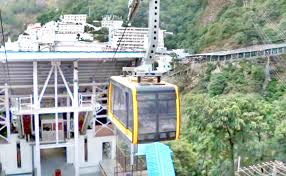
Introduction to the Vaishno Devi Trek
Trekking to Vaishno Devi is an integral part of the pilgrimage experience. The journey involves traversing the picturesque Trikuta Mountains to reach the Vaishno Devi Temple. The trek is not only a physical challenge but also a spiritual endeavor that requires determination and perseverance.
Routes and Paths to Reach the Temple
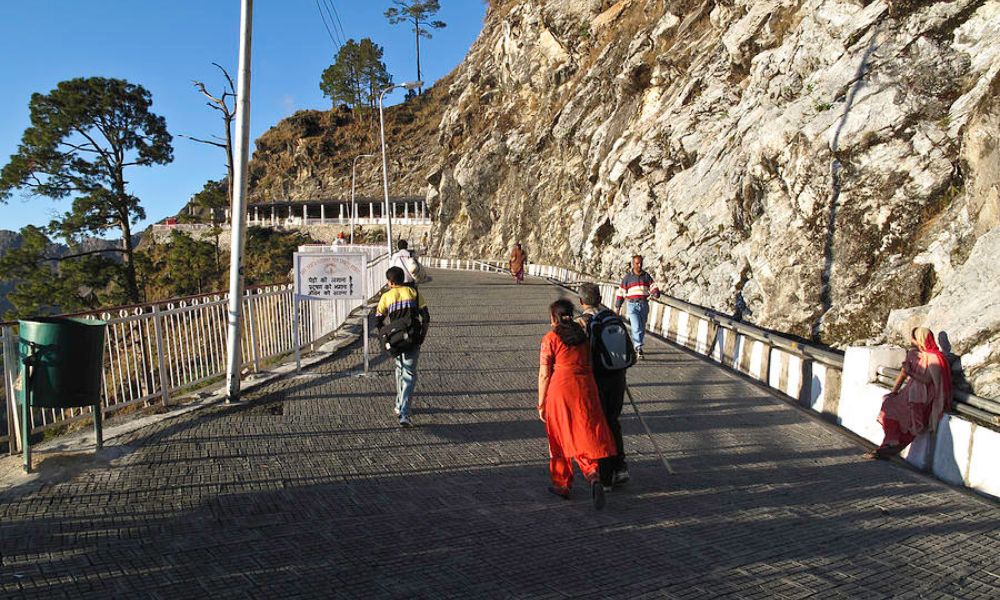
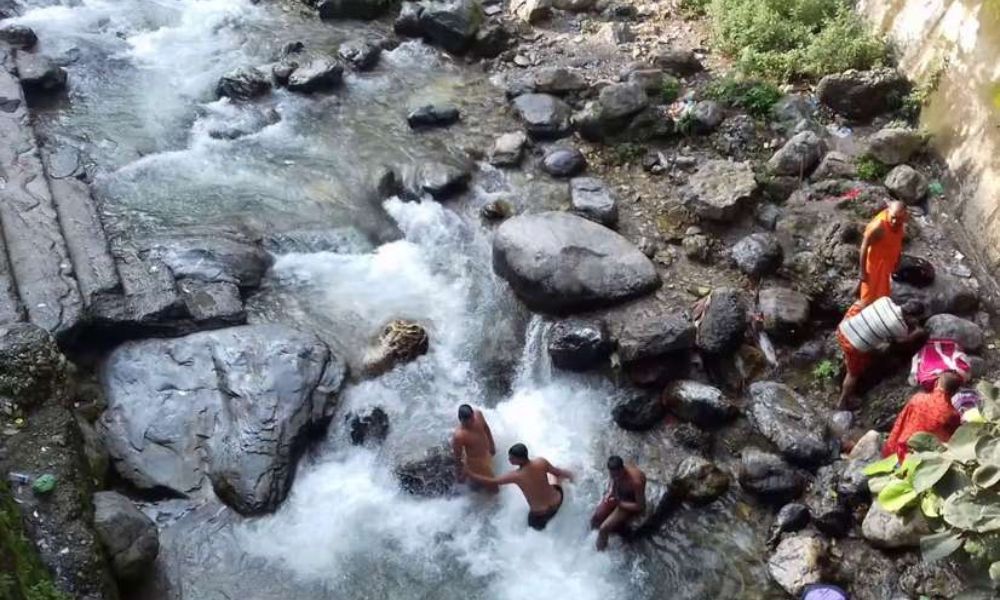
Tips and Guidelines for the Trek
- Physical Fitness: The Vaishno Devi trek involves steep uphill climbs and long distances. It is important to ensure that you are in good physical health before embarking on the journey. Regular exercise and conditioning can help prepare your body for the trek.
- Trekking Gear: Wear comfortable and sturdy footwear suitable for trekking. Carry a small backpack to carry essentials like water, snacks, a first aid kit, and extra clothing. Dress in layers to adjust to changing weather conditions.
- Hydration and Food: Stay hydrated during the trek by carrying an adequate supply of water. There are several stalls and shops along the route where you can buy snacks and food items. It is also advisable to carry energy bars or dry fruits for quick energy boosts.
- Pace Yourself: Trek at a comfortable pace that suits your fitness level. Take regular breaks to rest and regain energy. Listen to your body and avoid overexertion.
- Safety and Security: Follow the designated paths and routes, and do not venture into restricted or unsafe areas. It is recommended to trek during daylight hours to ensure better visibility and safety.
- Seek Assistance: In case of any difficulty or medical emergency, seek help from security personnel, volunteers, or shopkeepers along the route. They are there to assist pilgrims and ensure their safety.
By following these tips and guidelines, you can have a safe and fulfilling trekking experience in Vaishno Devi.
Enchanting Sights and Experiences
Bhairavnath Temple: A Sacred Destination
Bhairavnath Temple is a significant religious site located on the way to Vaishno Devi Temple. It holds immense importance in the pilgrimage journey. Situated at an altitude of approximately 1,800 meters, the temple is dedicated to Bhairavnath, an incarnation of Lord Shiva.
Devotees believe that the Vaishno Devi Yatra is incomplete without visiting Bhairavnath Temple. It is said that Mata Vaishno Devi had granted a boon to Bhairavnath, allowing him to reside there and receive the prayers of devotees.
The temple offers panoramic views of the surrounding mountains and valleys, adding to its serene and spiritual ambiance. Many pilgrims make it a point to visit Bhairavnath Temple to seek blessings and offer their prayers before continuing their journey to the Vaishno Devi Shrine.
Adkuwari: The Holy Cave Enroute

Adkuwari is an important stop along the trek to Vaishno Devi Temple. Located approximately halfway between Katra and Bhawan, it is known for the holy cave of Adkuwari.
The cave is believed to be the place where Mata Vaishno Devi meditated for nine months before finally emerging as the divine manifestation. Devotees can enter the cave and pay their respects to the symbolic representation of the goddess.
The path leading to Adkuwari is quite narrow and winding, adding a sense of adventure to the journey. The serene and mystical atmosphere around the cave creates a tranquil space for devotees to reflect and connect with their spiritual selves.
Banganga: The Sacred Water Source
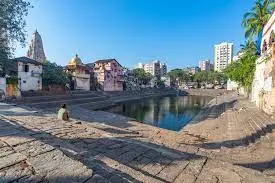
Banganga is a significant stop for pilgrims on their way to the Vaishno Devi Temple. It is a sacred water source where the goddess is believed to have quenched her thirst during her journey.
Devotees often take a brief halt at Banganga to refresh themselves and offer prayers. The water from the Banganga stream is considered holy, and many devotees fill their bottles with it as a sacred keepsake.
The area around Banganga is beautifully landscaped, with several small temples and resting places. It provides a serene and picturesque setting for pilgrims to take a moment of respite and rejuvenation before continuing their trek.
Visiting Bhairavnath Temple, Adkuwari, and Banganga adds depth and spiritual significance to the Vaishno Devi Yatra, enriching the overall pilgrimage experience with their sacredness and enchanting surroundings.
Vaishno Devi Yatra and Kashmir Tourism
Vaishno Devi as a Part of Kashmir Tourism
Vaishno Devi Yatra holds a significant place in Kashmir tourism. While Kashmir is renowned for its breathtaking natural beauty, the spiritual journey to Vaishno Devi adds a unique dimension to the overall tourism experience.
Many tourists and pilgrims include Vaishno Devi as a part of their itinerary when visiting Kashmir. It allows them to not only explore the scenic landscapes but also immerse themselves in the spiritual aura of the temple.
Exploring the Beauty of Jammu and Kashmir
Jammu and Kashmir, often referred to as “Paradise on Earth,” is a treasure trove of natural wonders. From the snow-capped mountains of the Himalayas to serene lakes, lush valleys, and colorful gardens, the region offers a diverse range of attractions.
Tourists visiting Jammu and Kashmir can indulge in activities like shikhara rides on Dal Lake in Srinagar, skiing in Gulmarg, exploring the beautiful meadows of Pahalgam, and witnessing the stunning landscapes of Sonamarg.
The region also boasts a vibrant culture, delicious cuisine, and warm hospitality, making it a memorable destination for travelers seeking a blend of natural beauty and cultural experiences.
Combining Vaishno Devi Yatra with Other Kashmir Attractions
For those embarking on the Vaishno Devi Yatra, it is convenient to combine the pilgrimage with visits to other popular attractions in Kashmir. After completing the yatra, tourists can explore the mesmerizing destinations in the region.
Some notable places to visit include:
- Srinagar: The summer capital of Jammu and Kashmir, known for its iconic Dal Lake, Mughal gardens, and historic sites like the Shankaracharya Temple and Hazratbal Shrine.
- Gulmarg: A paradise for nature lovers and adventure enthusiasts, famous for its skiing slopes, cable car rides, and stunning mountain views.
- Pahalgam: A picturesque valley renowned for its scenic beauty, gushing rivers, and enchanting hiking trails. It is also a base camp for the Amarnath Yatra.
- Sonamarg: Known as the Meadow of Gold, this charming hill station offers breathtaking views of snow-covered peaks, alpine meadows, and sparkling lakes.
Combining the Vaishno Devi Yatra with visits to these attractions allows travelers to experience the spiritual and cultural aspects of the pilgrimage alongside the natural splendor and cultural richness of Kashmir.
Popular Tourist Places in Kashmir
Srinagar: The Summer Capital of Jammu and Kashmir
Srinagar, the summer capital of Jammu and Kashmir, is a popular tourist destination known for its natural beauty and rich cultural heritage. The city is located on the banks of the famous Dal Lake and is surrounded by stunning Mughal gardens.
Visitors to Srinagar can enjoy a delightful shikhara ride on Dal Lake, marvel at the beautiful floating gardens, and explore the iconic Mughal gardens such as Nishat Bagh, Shalimar Bagh, and Chashme Shahi. The city is also home to historic landmarks like the Jama Masjid, Hazratbal Shrine, and Shankaracharya Temple
Gulmarg: The Skiing Paradise
Gulmarg, often referred to as the skiing paradise, is a breathtaking hill station situated in the Pir Panjal Range of the Himalayas. It is renowned for its snow-covered slopes, stunning landscapes, and adventure sports.
In winter, Gulmarg attracts skiers and snowboarders from all over the world. The Gulmarg Gondola, one of the highest cable car rides, offers panoramic views of the snow-clad mountains. During the summer, Gulmarg transforms into a picturesque destination with beautiful meadows, golf courses, and opportunities for trekking and horse riding.
Pahalgam: The Valley of Shepherds
Pahalgam, known as the Valley of Shepherds, is a scenic hill station situated on the banks of the Lidder River. It is famous for its pristine beauty, lush meadows, and towering mountains.
Nature lovers can explore attractions like Betaab Valley, named after the Bollywood film “Betaab,” Aru Valley, and Chandanwari. These places offer breathtaking landscapes, gushing streams, and starting points for treks and hikes. Pahalgam also serves as a base camp for the Amarnath Yatra, a significant pilgrimage in Hinduism.
Sonamarg: The Meadow of Gold
Sonamarg, also known as the Meadow of Gold, is a mesmerizing hill station located in the Ganderbal district of Kashmir. It is surrounded by majestic glaciers, alpine meadows, and dense forests.
The beauty of Sonamarg is unparalleled, with snow-covered peaks, colorful flowers, and glistening lakes. The Thajiwas Glacier is a popular attraction where visitors can witness the enchanting beauty of nature. The area also offers opportunities for trekking, camping, and fishing in the nearby rivers.
These popular tourist places in Kashmir, including Srinagar, Gulmarg, Pahalgam, and Sonamarg, offer a blend of natural splendor, adventure, and cultural experiences, making them top destinations for travelers visiting the region.
Immersing in Vaishno Devi Tourism
Local Cuisine and Food in Vaishno Devi
Vaishno Devi offers a unique culinary experience for visitors. The region is known for its delicious vegetarian cuisine, with a focus on traditional North Indian dishes. Pilgrims and tourists can savor a variety of delectable dishes such as Rajma Chawal (red kidney beans with rice), Kadhi Chawal (yogurt-based curry with rice), and various types of bread like roti and paratha.
Local street food stalls and restaurants in Katra, the base camp for the Vaishno Devi Yatra, serve piping hot snacks like Samosas, Pakoras, and Kachoris. One must also try the popular sweet dish called Patisa or Sohan Papdi, made from layered sugar and ghee.
Shopping and Souvenirs in Vaishno Devi
Vaishno Devi offers a range of shopping options where visitors can find unique souvenirs and religious artifacts. The bustling markets in Katra and nearby areas are filled with shops selling items like traditional Kashmiri handicrafts, Pashmina shawls, embroidered garments, dry fruits, and local spices.
One can also find religious souvenirs like idols and images of deities, prayer beads, incense sticks, and holy books. It is recommended to explore the local markets and shop for these authentic products as a remembrance of the pilgrimage.
Cultural and Festive Celebrations
Vaishno Devi is not only a place of pilgrimage but also a center for cultural and festive celebrations. The temple complex and the surrounding areas come alive during major Hindu festivals like Navratri, Diwali, and Makar Sankranti.
During Navratri, the nine-day festival dedicated to the Goddess, special ceremonies, and cultural performances take place. Devotees engage in devotional singing and dancing, creating an atmosphere of joy and devotion. Diwali, the festival of lights, is celebrated with great enthusiasm, and the temple complex is beautifully decorated.
Attending these festivals and being part of the cultural celebrations provides a deeper understanding of the local traditions and customs associated with the pilgrimage.
Immersing in Vaishno Devi tourism allows visitors to not only experience the spiritual aspects of the pilgrimage but also indulge in the local cuisine, shop for unique souvenirs, and participate in cultural festivities, enhancing the overall journey.
Things to Do in Vaishno Devi
Spiritual Retreats and Meditation Centers
Vaishno Devi offers a serene environment, making it an ideal place for spiritual retreats and meditation. Several ashrams and meditation centers in and around Katra provide an opportunity for visitors to engage in meditation, yoga, and spiritual discourses.
These retreats offer guidance from experienced spiritual teachers and create an atmosphere conducive to inner reflection and rejuvenation. It allows pilgrims and tourists to deepen their spiritual connection and find solace amidst the natural beauty of the region.
Nature Walks and Hiking Trails
Vaishno Devi is blessed with breathtaking natural surroundings, and exploring the region through nature walks and hiking trails is a popular activity. The hilly terrain, lush greenery, and scenic vistas make it a paradise for nature lovers and adventure enthusiasts.
One can embark on leisurely walks along the trails leading to the temple, immersing themselves in the tranquillity of the surroundings. There are also longer hiking trails available for those seeking more adventurous experiences. These trails offer stunning views of the mountains, valleys, and waterfalls, providing an opportunity to connect with nature in a meaningful way.
Adventure Activities in Vaishno Devi
For those seeking thrill and adventure, Vaishno Devi offers a range of exciting activities. One can engage in trekking, particularly the popular Vaishno Devi trek, which combines spirituality with adventure. The trekking route presents beautiful landscapes and scenic viewpoints along the way.
Additionally, activities like rock climbing, rappelling, and zip-lining are available in the region, adding an element of excitement to the journey. These adventure activities allow visitors to experience the thrill of the mountains and create lasting memories.
Whether it’s engaging in spiritual retreats and meditation, exploring the natural beauty through nature walks and hiking trails, or indulging in adventure activities, Vaishno Devi offers a diverse range of experiences for all types of travellers.
Frequently Asked Questions (FAQs)
What is the best time to visit Vaishno Devi?
The best time to visit Vaishno Devi is from March to October. The weather during these months is generally pleasant, making it comfortable for pilgrims to undertake the yatra. However, it is advisable to avoid the peak winter months of December and January when the region experiences heavy snowfall, which can make the trek challenging.
How long does it take to complete the Vaishno Devi Yatra?
The duration to complete the Vaishno Devi Yatra depends on various factors such as the route chosen, the physical fitness of the pilgrim, and the crowd during the time of visit. On average, it takes around 6 to 8 hours to trek from the base camp in Katra to the Vaishno Devi Temple and return. However, this can vary and pilgrims are advised to plan accordingly.
Can children and elderly people undertake the Vaishno Devi Trek?
Yes, children and elderly people can undertake the Vaishno Devi trek, but it is important to consider their physical fitness and health conditions. The trek can be demanding, with steep inclines and long distances, so they should consult with a doctor before undertaking the journey. It is recommended to take breaks, pace oneself, and ensure proper hydration and rest during the trek.
Are there any accommodations available near Vaishno Devi Temple?
Yes, there are various accommodation options available near the Vaishno Devi Temple. The base camp in Katra offers a range of hotels, guesthouses, and Dharamshala (pilgrims’ rest houses) to suit different budgets and preferences. It is advisable to make bookings, especially during peak seasons, to ensure availability.
What are the must-visit places in Kashmir other than Vaishno Devi?
Apart from Vaishno Devi, there are several must-visit places in Kashmir:
- Srinagar: The capital city of Jammu and Kashmir, known for its beautiful lakes, Mughal gardens, and houseboats on Dal Lake.
- Gulmarg: A popular skiing destination with stunning meadows, cable car rides, and snow-covered peaks.
- Pahalgam: A picturesque hill station renowned for its scenic beauty, rivers, and trekking trails.
- Sonamarg: Also known as the Meadow of Gold, it offers breathtaking views, glaciers, and opportunities for trekking and camping.
These destinations offer unique experiences and showcase the natural beauty of the Kashmir region, complementing the spiritual journey to Vaishno Devi.
In Summary
In Summary, the Vaishno Devi Yatra offers a unique and fulfilling experience for pilgrims and tourists alike. The journey to the sacred Vaishno Devi Temple is not only a testament to one’s devotion but also an opportunity to witness the natural beauty and cultural richness of the region.
Throughout this guide, we have explored various aspects of the Vaishno Devi Yatra, including its historical and mythological significance, spiritual importance, planning considerations, and the enchanting sights and experiences that await visitors. We have also highlighted the connection between Vaishno Devi and the broader Kashmir tourism, showcasing the beauty of destinations like Srinagar, Gulmarg, Pahalgam, and Sonamarg.
From the architectural marvel of the Vaishno Devi Temple to the serene meditation centers, nature walks, and adventure activities, Vaishno Devi offers a wide range of experiences to cater to different interests and preferences. The cultural and festive celebrations further enhance the vibrant atmosphere, adding joy and spiritual fervor to the journey.
We have addressed common questions and concerns, such as the best time to visit, the duration of the yatra, the trek’s accessibility for children and the elderly, and the availability of accommodations near the temple.
Encouraging families to embark on this adventurous journey, we emphasize the opportunity for strengthening bonds, creating lasting memories, and deepening the spiritual connection together. The Vaishno Devi Yatra provides a unique combination of devotion, adventure, and cultural exploration, making it a fulfilling experience for families.
So, whether you seek spiritual enlightenment, natural beauty, or a sense of adventure, the Vaishno Devi Yatra offers it all. Plan your trip, immerse yourself in the divine atmosphere, and embrace the wonders that await you. May your journey to Vaishno Devi be filled with blessings, joy, and unforgettable experiences.
Recap of the Exciting Aspects of Vaishno Devi Yatra
The Vaishno Devi Yatra is a spiritual pilgrimage that offers a unique blend of devotion, natural beauty, and adventure. Let’s recap the exciting aspects of this journey:
- Spiritual Significance: Vaishno Devi Temple holds immense religious importance and is believed to fulfill the wishes of devotees. The history, mythology, and cultural significance of the temple create a deeply spiritual atmosphere.
- Trekking Experience: The trek to Vaishno Devi is an exhilarating adventure, allowing pilgrims to connect with nature and challenge themselves physically. The beautiful landscapes, hiking trails, and panoramic views make the journey memorable.
- Enchanting Sights: Along the way, pilgrims can explore sacred destinations like Bhairavnath Temple, Adkuwari, and Banganga, each with its own significance and charm. These sites add depth to the spiritual journey.
- Kashmir Tourism: Vaishno Devi is not just a pilgrimage; it can be combined with exploring the beauty of Jammu and Kashmir. Places like Srinagar, Gulmarg, Pahalgam, and Sonamarg offer diverse experiences, from picturesque landscapes to adventure sports.
Encouraging Families to Embark on this Adventurous Journey
Embarking on the Vaishno Devi Yatra as a family can be a truly rewarding experience. It provides an opportunity for families to strengthen their bonds, create lasting memories, and deepen their spiritual connection together. The journey offers a balance of devotion, adventure, and cultural exploration, catering to the diverse interests of family members.
Children can learn about the rich history and mythology associated with the temple, while elders can find solace in the spiritual ambiance. Trekking together promotes physical fitness and instills a sense of achievement. Exploring the enchanting sights and experiencing the cultural celebrations enriches the overall experience.
It is important to plan the trip well, considering factors like the best time to visit, the duration of the yatra, and suitable accommodations. By undertaking this adventurous journey, families can create a shared experience that will be cherished for a lifetime.
So, gather your loved ones, embark on the Vaishno Devi Yatra, and immerse yourselves in the divine, natural, and cultural wonders that await you.
